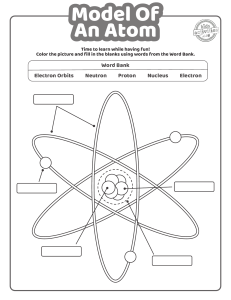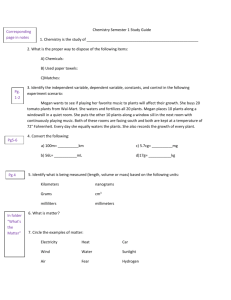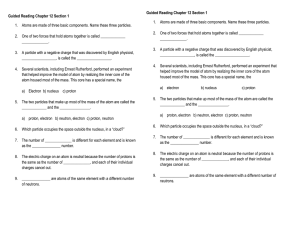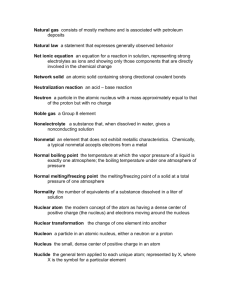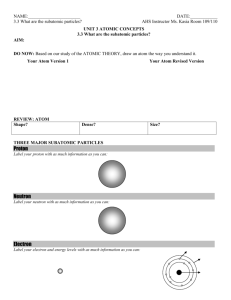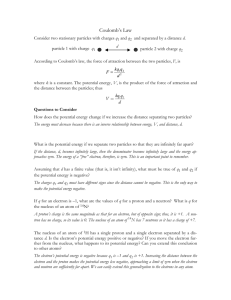DSR S1W9 Quiz #3
advertisement
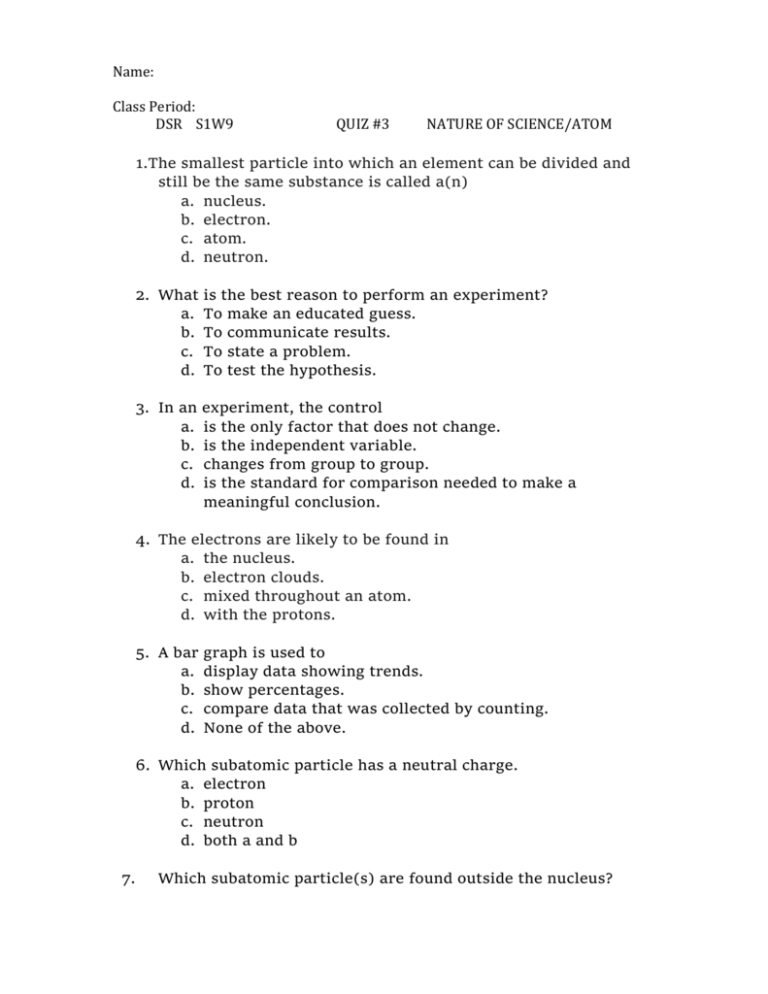
Name: Class Period: DSR S1W9 QUIZ #3 NATURE OF SCIENCE/ATOM 1.The smallest particle into which an element can be divided and still be the same substance is called a(n) a. nucleus. b. electron. c. atom. d. neutron. 2. What a. b. c. d. is the best reason to perform an experiment? To make an educated guess. To communicate results. To state a problem. To test the hypothesis. 3. In an a. b. c. d. experiment, the control is the only factor that does not change. is the independent variable. changes from group to group. is the standard for comparison needed to make a meaningful conclusion. 4. The electrons are likely to be found in a. the nucleus. b. electron clouds. c. mixed throughout an atom. d. with the protons. 5. A bar graph is used to a. display data showing trends. b. show percentages. c. compare data that was collected by counting. d. None of the above. 6. Which subatomic particle has a neutral charge. a. electron b. proton c. neutron d. both a and b 7. Which subatomic particle(s) are found outside the nucleus? a. b. c. d. electron proton neutron both b and c 8. Which subatomic particle has a positive charge. a. electron b. proton c. neutron d. both a and b 9. The horizontal axis is the a. X-axis. b. the axis the independent variable is plotted on. c. Y-axis. d. Both a and b. 10. The dependent variable is plotted on the a. X-axis. b. Y-axis c. vertical axis d. both b and c. 11. All graphs must have a. an x-axis. b. a y-axis c. a specific title d. a key. 12. The atomic number is a. the number of neutrons in the nucleus. b. the number of protons in the nucleus. c. the number of electrons d. the same as the atomic mass number. Use the blanks provided to label parts of the atom. A. ____________________ C. B. D. E.
